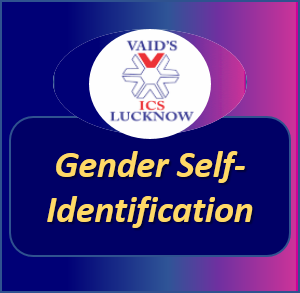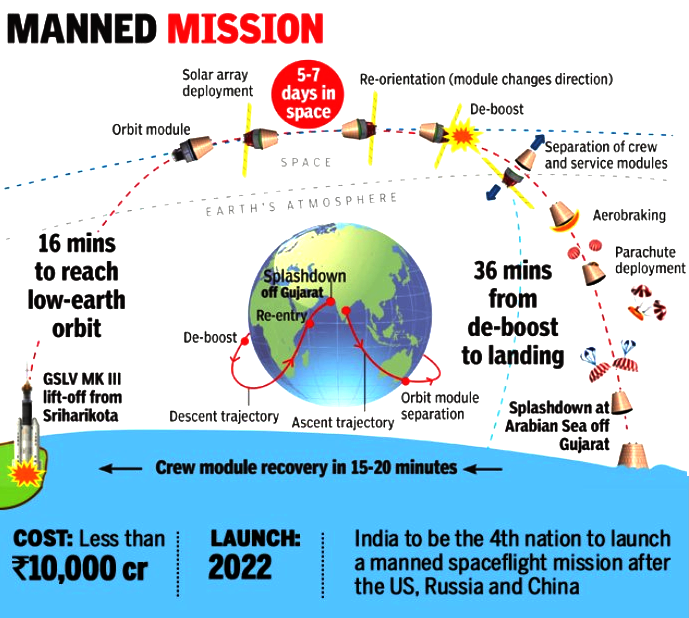CURRENT AFFAIRS
Get the most updated and recent current affair content on Padhaikaro.com
Gender Self-Identification
- Vaid's ICS, Lucknow
- 02, Jul 2021

Why in News? Recently, the Spanish government has approved the first draft of a bill that would allow anyone over the age of 14 to legally change gender without a medical diagnosis or hormone therapy.
What is Gender Self-Identification or ‘Self ID’?
- It is a concept that a person should be allowed to legally identify with the gender of their choice by simply declaring so, and without facing any medical tests.
- It has been a long held demand of trans-right groups around the world, including in India, as prejudice against trans-people remains rampant.
Arguments against gender self-identification:
- Some feminist and gay-rights groups insist that such a law could endanger women and cause more gay teenagers to be told that they might be Trans.
- The feminist forums that believe that sex is not something which can be chosen have insisted that allowing self-identification could put at risk all laws that specifically prevent discrimination against women.
Legality of Gender Self-Identification or ‘Self ID:
- As per the advocacy group ILGA (the International Lesbian, Gay, Bisexual, Trans and Intersex Association), 15 countries around the world recognise self-ID.
- It includes Denmark, Portugal, Norway, Malta, Argentina, Ireland, Luxembourg, Greece, Costa Rica, Mexico (only in Mexico City), Brazil, Colombia, Ecuador and Uruguay.
- In Denmark, the law requires a six-month reflection period for formalizing gender change.
- In Portugal, changing one’s gender for the second time requires going to court.
- In Hungary, a newly adopted law effectively bans all content about homosexuality and gender change from school curriculum and television shows for children under the age of 18.
Laws for declaration of gender in India
- In India, the rights of transgender persons are governed by the Transgender Persons (Protection of Rights) Act, 2019 and the Transgender Persons (Protection of Rights) Rules, 2020.
- Under the Rules, an application to declare gender is to be made to the District Magistrate.
- The parents can also make an application on behalf of their child under the Transgender Persons (Protection of Rights) Rules, 2020.
- As per the Rules, state governments have also been directed to constitute welfare boards for transgender persons to protect their rights and interests, and facilitate access to schemes and welfare measures.
GS III
Why in News?
he Indian Space Research Organisation (ISRO) is planning to launch the first uncrewed mission in December, as part of the human spaceflight programme 'Gaganyan'. It is facing challenges due to the adverse impact of the COVID-19-induced lockdowns that has disrupted hardware delivery schedules.
- As part of the mandate of Gaganyaan, two uncrewed flights are planned to test the end-to-end capacity for the manned mission.
When was it announced?
- Formal announcement of the Gaganyaan programme was made by Prime Minister Narendra Modi during his Independence Day address on August 15, 2018.
- The initial target was to launch the human spaceflight before the 75th anniversary of India’s independence on August 15, 2022.
Objectives:
The objective of the Gaganyaan programme is to demonstrate the capability to send humans to low earth orbit on board an Indian launch vehicle and bring them back to earth safely.
Preparation and launch:
- Four Indian astronaut-candidates have already undergone generic space flight training in Russia as part of the Gaganyaan programme.
- ISRO’s heavy-lift launcher GSLV Mk III has been identified for the mission.

Relevance of a Manned Space Mission for India:
- Boost to industries: The Indian industry will find large opportunities through participation in the highly demanding Space missions. Gaganyaan Mission is expected to source nearly 60% of its equipment from the Indian private sector.
- Employment: According to the ISRO chief, the Gaganyaan mission would create 15,000 new employment opportunities, 13,000 of them in private industry and the space organisation would need an additional manpower of 900.
- Spurs research and development: It will thrust significant research in areas such as materials processing, astro-biology, resources mining, planetary chemistry, planetary orbital calculus and many other areas.
- Motivation: Human space flight will provide that inspiration to the youth and also the national public mainstream. It would inspire the young generation into notable achievements and enable them to play their legitimate role in challenging future activities.
- Prestige: India could potentially become the fourth country to launch a human space mission. The Gaganyaan will not only bring about prestige to the nation but also establish India’s role as a key player in the space industry.
Indrajaal
Hyderabad-based technology R&D firm Grene Robotics has designed and developed India’s first indigenous drone defence dome called “Indrajaal”.
- Features: The drone defence dome has the capability to autonomously protect an area of 1000-2000 sq km against the aerial threats by assessing and acting on aerial threats such as Unmanned Aerial Vehicles (UAVs), loitering munitions, and Low- Radar Cross Section (RCS) targets.
